While driving home from work one day in the fall, Mrs. Brinza saw something so interesting on the side of the road she just had to stop and take a picture of it. The dead raccoon appeared to be roadkill, and it served as a great discussion point last week in class.
There were lots of things to notice and wonder about the raccoon, including how it died, what would happen to it over time, and what would possibly change about its disappearance if the surface it died on changed. We also wondered how the amount of rainfall or heat would change what happened to it, too.
There were lots of things to notice and wonder about the raccoon, including how it died, what would happen to it over time, and what would possibly change about its disappearance if the surface it died on changed. We also wondered how the amount of rainfall or heat would change what happened to it, too.
Students developed initial models for the raccoon and what would happen to it over the course of a couple days, two weeks, and then two months. Here are some of their models to ponder over...
There are LOTS of ideas of what will happen to the raccoon over time, including:
- People who take the raccoon away
- All kinds of organisms will eat the raccoon including: birds, flies, maggots, bacteria, rats, wolves, worms, vultures, eagles, bees, spiders, fly larva, bugs, and scavengers
- The ground will suck up the flesh
- The raccoon will be smelly and give off "stink"
- It will rot
- It will go underground
- The raccoon will decay
- It will degrade
- It will decomopose
- The fur will leave the body
- Bones will be left, maybe becoming dust
So here are the investigations we came up with for each class...
And while we agreed that watching this happen naturally would be the best to figure out what happens to the raccoon over time, it may be too challenging to do out in nature or too risky to bring into our classroom. We all agreed Mrs. Brinza would have to do some research over the long weekend. Thank goodness we had a snow day Friday (this never happens in Chicago) so she could find something good! Fingers crossed!
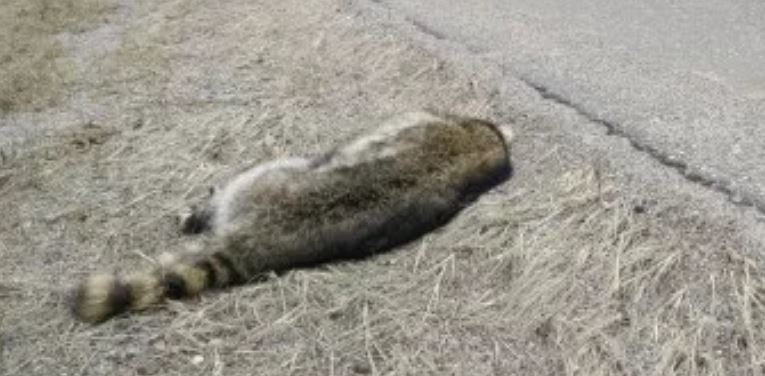
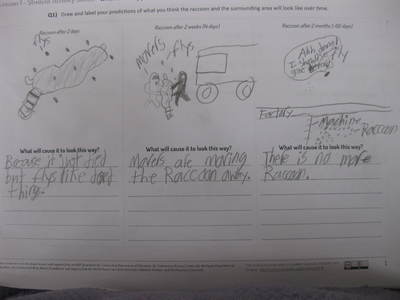
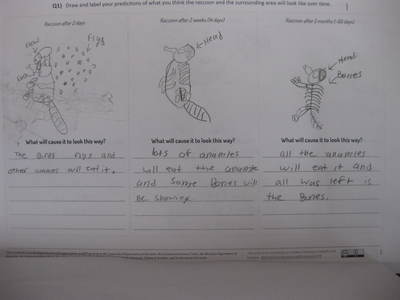
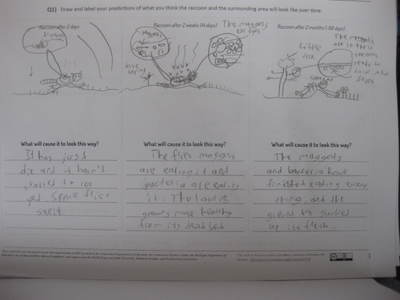
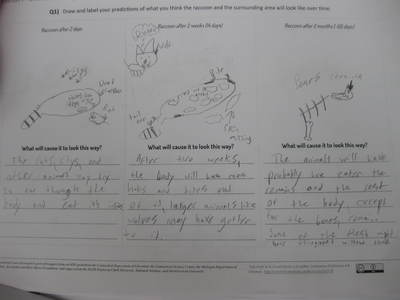
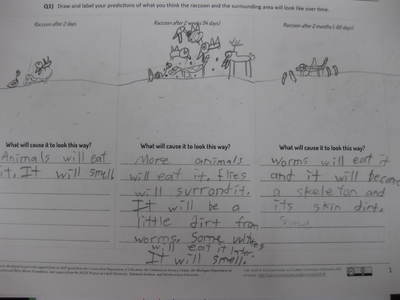
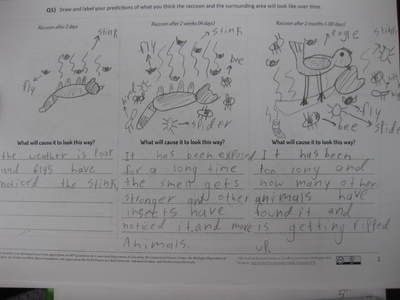
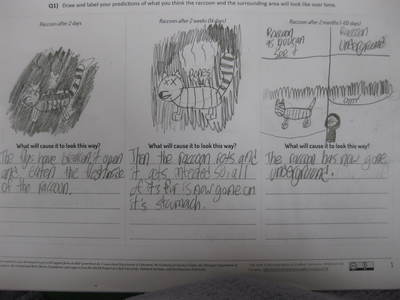
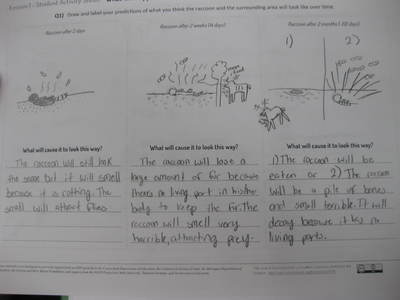
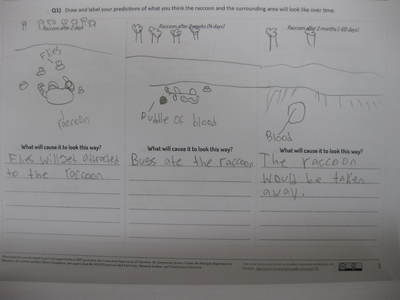
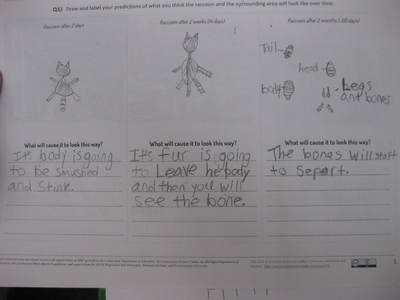
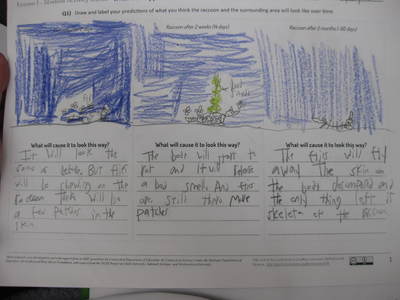
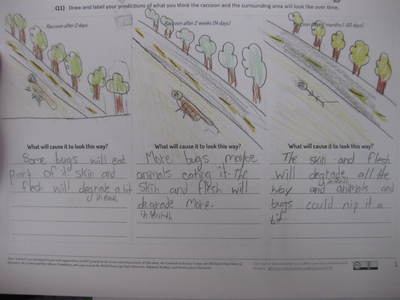
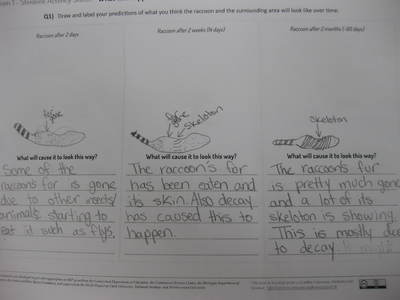
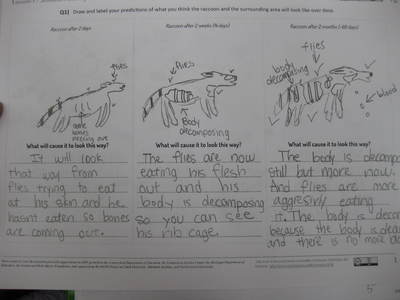
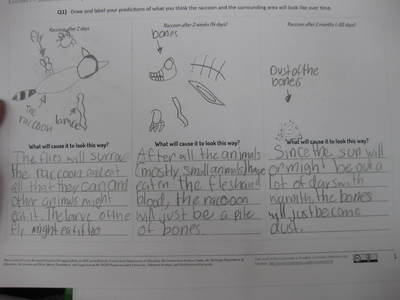
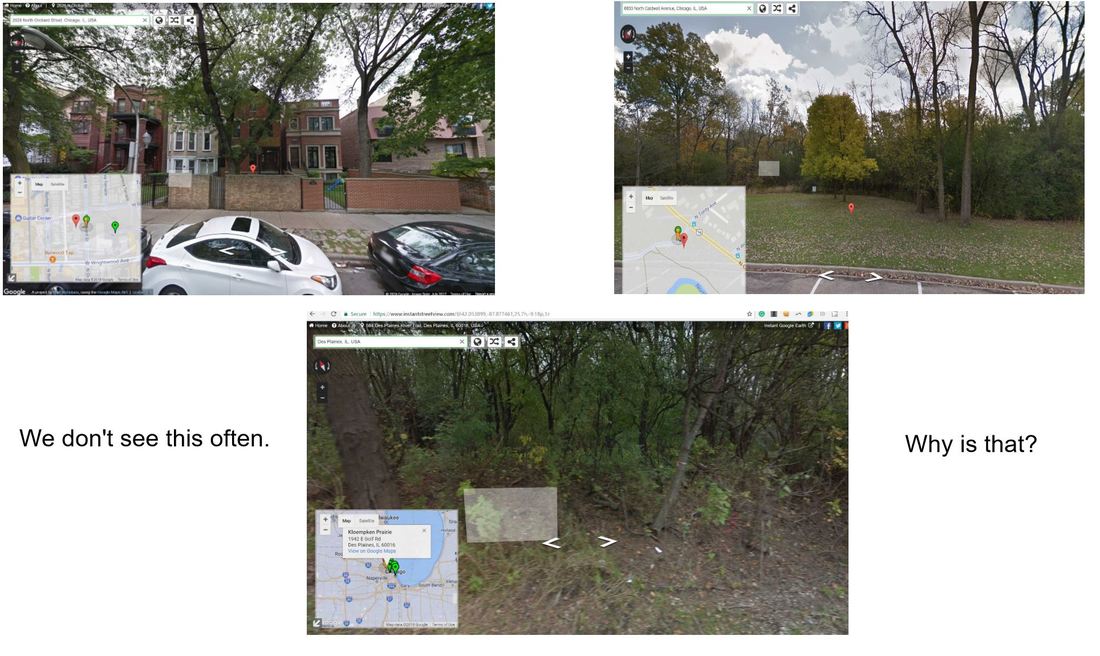
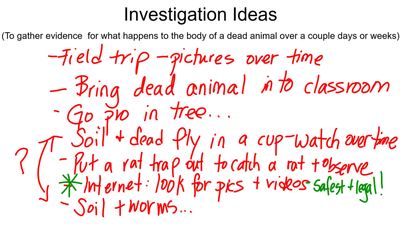
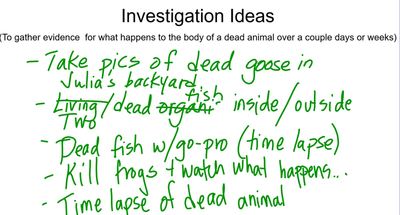
 RSS Feed
RSS Feed